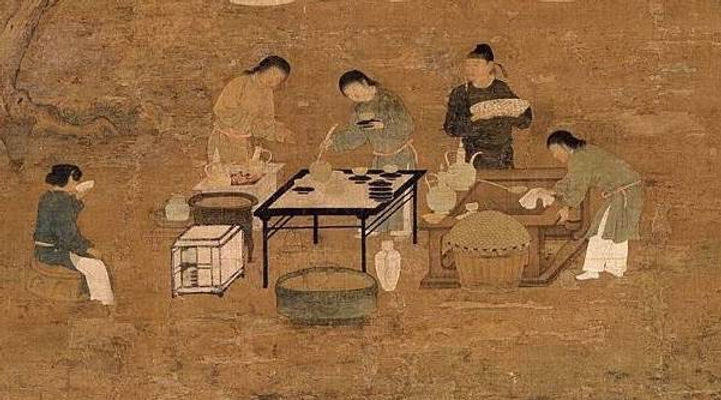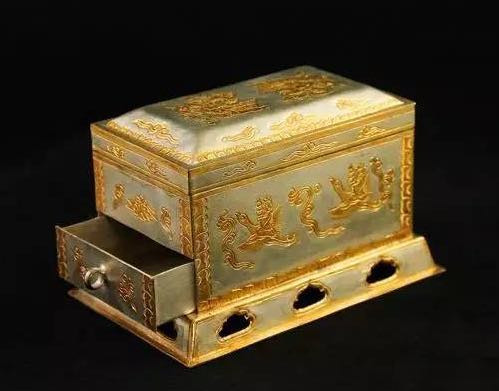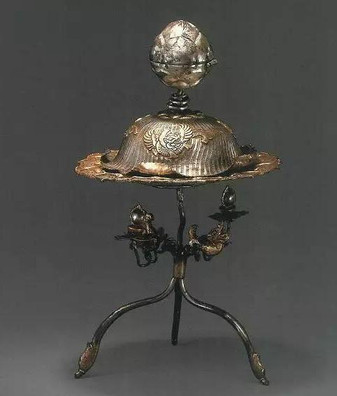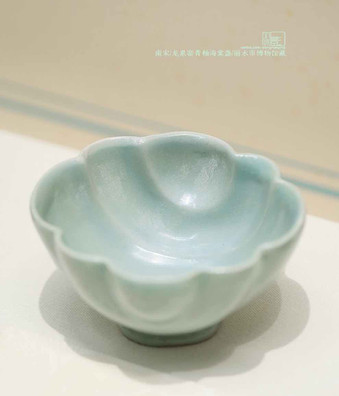Chinese Tea — Origin, Culture, Art, Utensil, Function, and Classification

Chinese tea and culture encompasses everything about tea: planting and production, ceremony and etiquette, morality, utensils, stories, tea art, customs, and more.
It can be highly intricate and exquisite or quite plain and simple.
We can discover tea culture in ancient tea books, poems, artifacts, and paintings, as well as within beautiful tea plantations and everyone’s teacups.
People are the essence of culture.
Hence, whatever, however, and wherever they drink, be it expensive or cheap tea leaves, fancy or simple tea sets, in a fabulous room, or just sitting on the roadside, are all important elements of Chinese Tea Culture.

In the Painting "Wen Hui Tu" by Emperor Zhao Ji (1082 — 1135), People Are Boiling Water, Making and Drinking Tea — Taipei Palace Museum
Sage of Tea in Chinese Culture
Importance of Tea in Big Events
Situations Where Tea Consumption is Not Suitable

Chinese Tea and Culture, Picture from Wenyue.
History of Chinese Tea
Tea originated in China around 5000 to 6000 years ago and has been used mainly for two functions:
-
As offerings in grand ceremonies
-
As medicine to detoxify or cure certain diseases
During the later Western Zhou Dynasty (1046 BC — 771 BC), tea gained significance as a tribute to kings and became popular among royals.
By the time of the Sui Dynasty (581 — 618), tea had already gained widespread popularity in the civilian world.

Extant Earliest Tea Leaf, Unearthed from the Mausoleum of Emperor Jing of Han (188 BC — 141 BC) — Hanyangling Museum
Sage of Tea in Chinese Culture
Lu Yu (about 733 — 840), respected as the Sage of Tea or God of Tea, completed "The Classic of Tea," an important tea encyclopedia that formed the foundation of comprehensive tea culture.
In this masterpiece, Lu Yu covered tea's history, function, classification, cultivation, production, cooking methods, utensils, ceremonies, customs, stories, and more.
Since then, tea has been one of the essential drinks in Chinese culture.

White Glaze Figurine of Northern Song Dynasty (960 — 1127), Believed as Lu Yu the Sage of Tea — Capital Museum (Photo by Dongmaiying)
Importance of Tea in Big Events
Tea trees can only grow from seeds and cannot be transplanted, symbolizing eternal loyalty.
Also, tea symbolizes elegance, politeness, harmony, persistence, and modesty in Chinese culture.
Therefore, tea leaves have been served as tributes, rewards, and betrothal presents from royals to civilians.
Serving and drinking tea are important rites in nearly all important ceremonies and activities, such as the Coming of Age and Traditional Chinese Wedding.

Part of Wedding Porcelain Sets for Emperor Tongzhi (1862 — 1874) — Palace Museum
Best Water to Make Tea
According to 'The Classic of Tea,' the choice of water plays a pivotal role in the art of tea-making.
The best water is from a spring in the mountains, followed by water from a river, while well water is considered the least preferable.
Collecting pure dew, rain, and snow that hasn't touched the ground is also renowned for making tea.

Chinese Tea Set and Spring Water, Picture from Shiqingcongya.
Main Functions of Chinese Tea
Diverse varieties of tea offer a spectrum of potential benefits, each contributing to overall well-being and health. These teas have the capacity to:
-
Refresh and invigorate the body and mind
-
Aid in weight loss through metabolism stimulation
-
Lower blood pressure for cardiovascular health
-
Reduce cholesterol levels for better heart function
-
Detoxify the body by eliminating impurities
-
Facilitate digestion for improved gastrointestinal well-being
-
Possess anti-aging properties to promote youthful vitality
-
Alleviate stress and anxiety, fostering mental well-being
-
Strengthen the immune system for enhanced resilience
-
Boost metabolism to support energy and vitality
-
Contribute to the treatment of certain diseases and health conditions, among other potential benefits

Situations Where Tea Consumption is Not Suitable
Despite its universally cherished nature, there are situations where tea consumption is not recommended and is considered unhealthy.
-
People with an empty stomach, such as before dinner
-
Right after eating meals
-
During the period of taking medications
-
Women on their periods or pregnant
-
Before sleep
-
After drinking alcohol
-
People with Panasthenia, Iron-deficiency Anemia, Liver Dysfunction, Heart Diseases, Gastric Ulcer, Fever, etc.
-
Do not drink overnight tea, nor very strong tea
Chinese Tea Utensils
Tea-Making Utensils of Tang Dynasty (618 — 907), Unearthed From Famen Temple.
Utensils for Drinking Tea in the History of China, Photo by Dongmaiying.
Seasonal Drinking of Tea
Considering the diverse climate and distinctive characteristics of various teas, a prevailing belief suggests that each season offers a unique and optimal tea-drinking experience.
This tradition has given rise to a harmonious alignment of tea varieties with the changing seasons, where the qualities of the tea complement atmospheric conditions. Below are some examples illustrating the harmonious synergy between tea and each distinct season.
In the rejuvenating embrace of spring, scented teas bloom with floral notes, creating an aromatic and uplifting infusion.
As summer unfolds, the crisp and refreshing profile of Green Tea often takes center stage, offering a cool respite from the warmth.
The arrival of autumn introduces the rich and nuanced flavors of Oolong Tea, serving as a perfect companion to the earthy tones of the season.
Similarly, during the winter months, the robust and hearty Black Tea often takes precedence, providing a comforting and warming indulgence.

Chinese Tea and Culture, Picture from Hexiangyin.
Main Classifications of Chinese Tea
Based on the fermentation degree, tea in China is divided into six groups: Green Tea, White Tea, Yellow Tea, Oolong Tea, Black Tea, and Dark Tea.
Besides the six main types are Reprocessed Tea, such as Scented Tea.

Green Tea
Green tea is the most productive and common type in China, which doesn’t need fermentation in the making process.
Hence, it contains the most Tea Polyphenol.
It is good for reducing radiation and inflammation, keeping fit, anti-aging, improving digestion, etc.
However, it is not suitable for neurasthenic people.

White Tea
White Tea is a special type in China that has the most natural, simplest making process and the slightest fermentation degree.
It is believed to be good for balancing blood sugar, promoting metabolism, breaking down fats, and protecting the eyes and liver.

Yellow Tea
Yellow Tea is slightly more fermented than White Tea and is believed to be good for digesting, preventing cancer, sterilizing, and anti-inflammation.
Yellow Tea is a perfect choice for people with dyspepsia and adiposity.

Oolong Tea
Oolong Tea is half fermented, whose leaf is green in the middle and red at the edge.
It has the best effect on losing weight among all teas, which is also good for reducing blood pressure and cholesterol levels, digesting, refreshing, anti-dysentery, etc.

Black Tea
Black Tea needs long fermentation in the making process, and its leaves and water are all red.
In Chinese, it is called Red Tea.
Black Tea is believed to be good for digesting, warming the stomach, and alleviating fatigue.

Dark Tea
Dark Tea has the highest fermentation degree and is especially popular in northern China, where the main food is lamb, beef, and other red meat.
Dark tea is very good for digesting, eliminating oil and fat in one's body, reducing cholesterol levels, decreasing blood sugar and blood pressure, antioxidants, and anti-aging.

Scented Tea
Scented Teas are made of tea leaves (usually Green Tea or Black Tea) with flowers or fruits.
Special techniques are used to mix tea leaves with flowers or fruits, whose scents would be absorbed and combined perfectly.
There are many combinations of Scented Teas, whose products can be tea leaf, flower, fruit, a mix of leaf and flower, or a mix of fruits.
Some common ingredients used to make Scented Teas are rose, osmanthus, jasmine, lily, chrysanthemums, honeysuckle, violet, lavender, lotus leaf, lemon, haw, fig, Momordica Grosvenor, etc.

You Might Also Like:
Diverse and Traditional Chinese Drinks
Exquisite Dessert in Chinese Food Culture
Chinese Alcohol Culture and Toasting Etiquette
Daily Etiquette and Table Manners in the Tradition of China
Chinese Food Culture — Fun Facts, History, Development, and Etiquette
Chinese Dishes — History, Development, Culture, Names, and Facts
Chinese Cuisines — Origin, Classification, Tradition, Culture, and Fact
Shandong/Lu Cuisine — Representative of Northern Chinese Food Culture
Jiangsu/Su Cuisine — Sweet, Fresh Series of the Royals
Anhui/Hui Cuisine — Natural, Tasty Series that Disseminated by Diligent Merchants
Fujian/Min Cuisine — Series of Multi-ethnic, Fresh Seafood and Regional Vegetables
Zhejiang/Zhe Cuisine — Delicate Series with Close Connections to History & Culture
Sichuan/Chuan Cuisine — Popular, Spicy Series with Affluent Flavors
Cantonese/Yue Cuisine — Exquisite Series that Preserves the Primary Flavor
Hunan/Xiang Cuisine — Spicy, Sour Series For People Living in Moist Climate


















